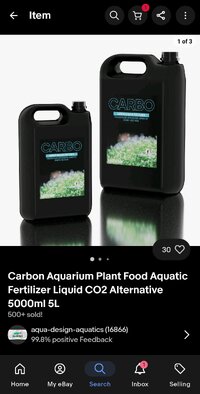Has anyone got any feedback on this product from "Aqua design" I usually look at the % of glutaraldehyde in a product I'm buying, as nothing was stated on the label or website, I emailed the company asking for some basic information, I.e the glutaraldehyde percentage used in their product. Unfortunately they weren't willing to disclose the % claiming their formula is a secret which has raised doubts on the effectiveness of their product.
Anyone that's actually used this and has some feedback, I'd really appreciate it, thank you in advance.
Anyone that's actually used this and has some feedback, I'd really appreciate it, thank you in advance.



